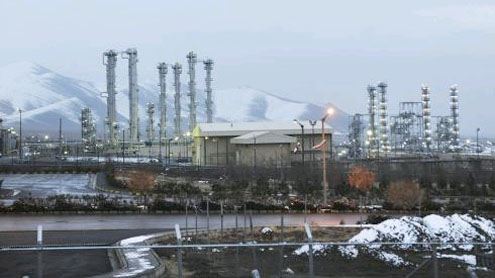 TEHRAN: Iran yesterday rejected allegations it attempted to clean up radioactive traces possibly left by secret nuclear work at a key military site before granting UN inspectors permission to visit the facility.
TEHRAN: Iran yesterday rejected allegations it attempted to clean up radioactive traces possibly left by secret nuclear work at a key military site before granting UN inspectors permission to visit the facility.
Foreign Ministry spokesman Ramin Mehmanparast told reporters that the allegations were misleading and false, and insisted that such traces could not be cleaned up. Satellite images of Iran’s Parchin military facility that circulated last week appeared to show trucks and earth-moving vehicles at the location. That set off assertions by diplomats, all nuclear experts accredited to the UN nuclear agency in Vienna, Austria, about a cleanup operation.
The diplomats said the crews at Parchin may be trying to erase evidence of a test of a small nuclear-weapon trigger. The diplomats spoke to The Associated Press on condition of anonymity because they were not authorized to discuss the information on the record.
The assertions added to tensions surrounding Iran’s controversial nuclear program, which the West fears is geared toward nuclear weapons-making but Tehran insists is for peaceful purposes. Mehmanparast dismissed the diplomats’ assertions. “Those who are familiar with nuclear physics know that these comments are not remarkable in any way,” he said. “This is mainly public speculation and not based on logic.”
“Basically, nuclear military activities are not cleanable, at all,” Mehmanparast said. He did not directly address the satellite photos but stressed that Parchin has been continuing its “conventional military” activities and operations.Inspecting Parchin, southeast of the capital Tehran, was a key request made by senior IAEA teams that visited Tehran in January and February. Iran rebuffed those demands at the time, as well as attempts by the nuclear agency’s team to question Iranian officials and secure other information linked to the allegations of secret weapons work.
But last week, a statement by Iran’s permanent envoy to the IAEA said the visit will now be allowed in a gesture of good will. The Parchin complex has been often mentioned in the West as a suspected base for secret nuclear experiments — a claim Iran consistently denies. IAEA inspectors visited the site in 2005, but only one of four areas on the grounds and reported no unusual activities. – Arabnews












